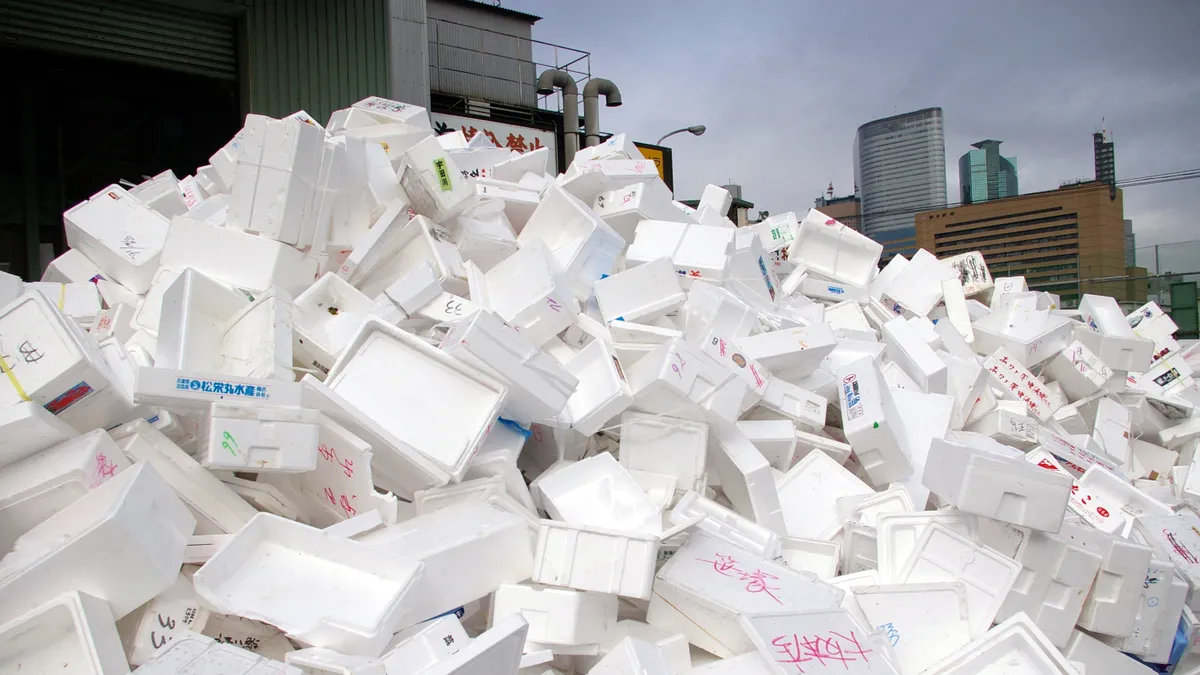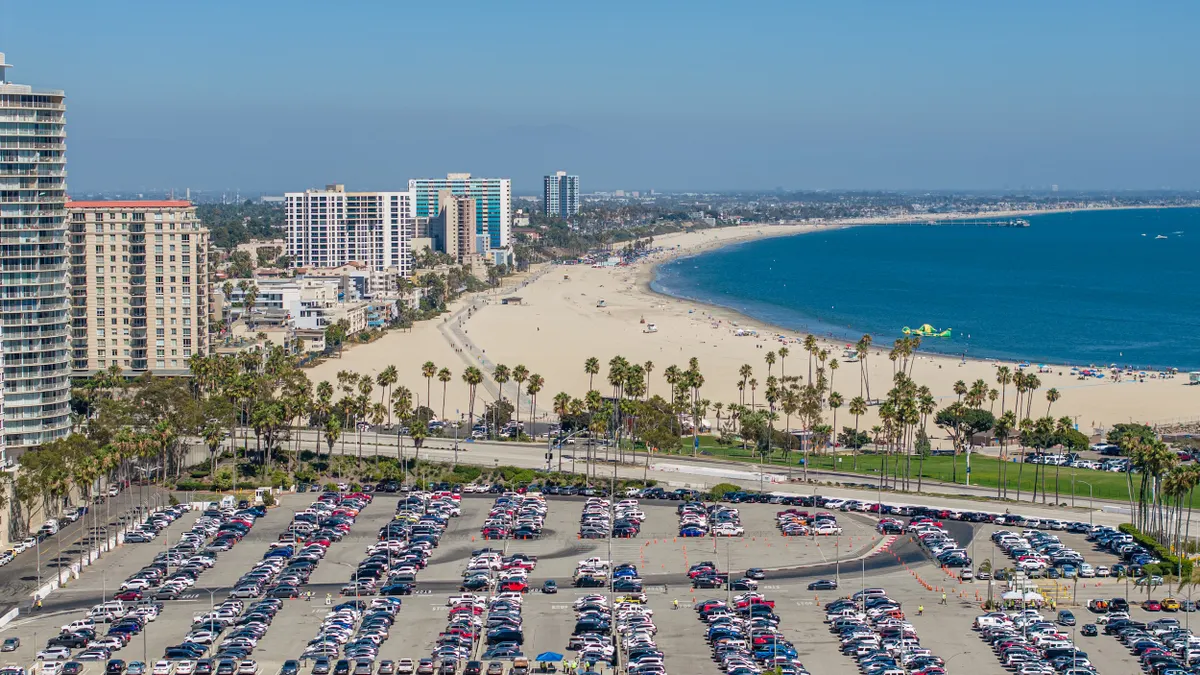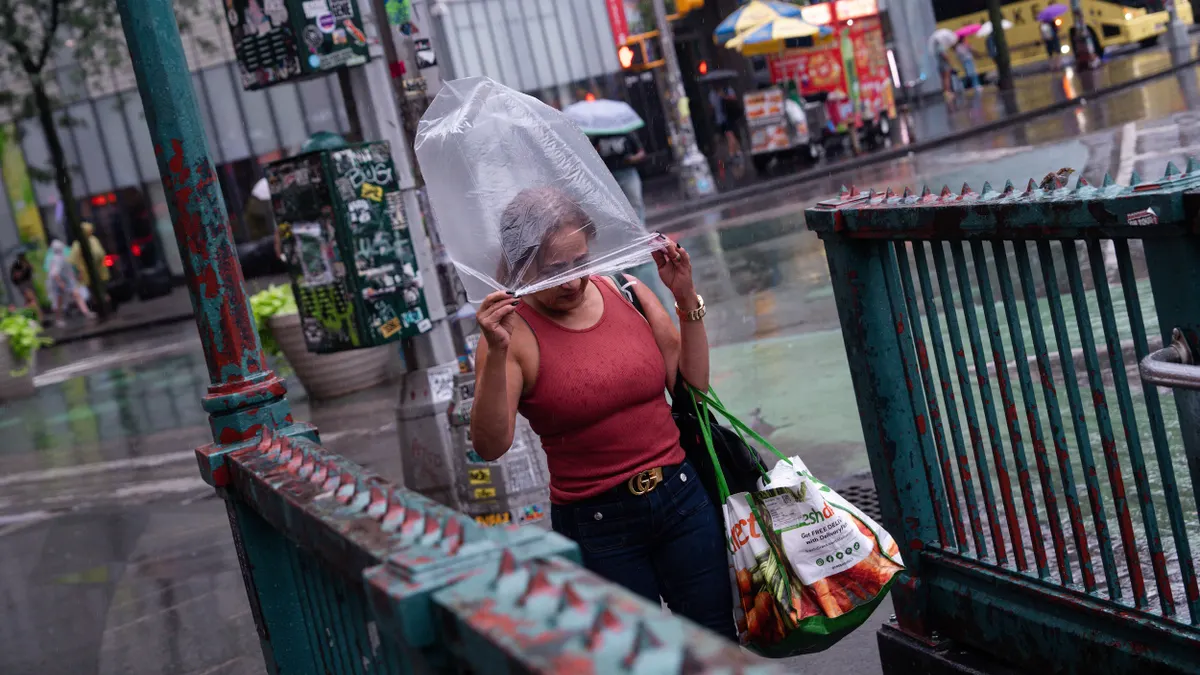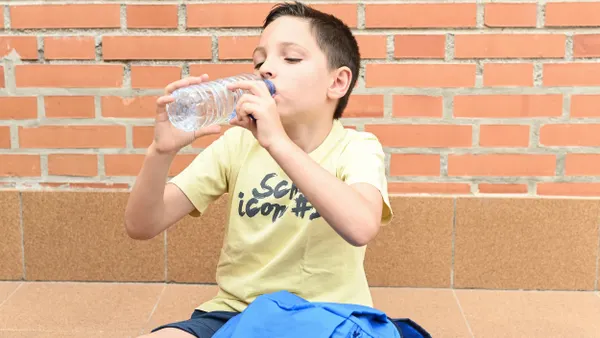Smart cities’ roads to greater sustainability are long and sometimes difficult to navigate. Successful plans tend to involve pursuing sustainability from a number of fronts simultaneously, which further complicates the issue.
A recent report from NRG Energy found that tackling energy sustainability is a significant challenge, though cities of all sizes can do it by first assessing their unique resources and strengths. Energy is far from the only factor cities consider when addressing sustainability, though. Cities' waste streams, and whether or not to ban controversial items like foam and single-use plastic bags, are another.
Boston, for example, passed a single-use plastic bag ban in December 2017, which goes into effect this December. All stores will be required to provide only compostable or recyclable bags at check-out stands, and they must charge at least five cents per bag. Per the city ordinance, that fee goes back to the stores themselves.
Although many stores, especially grocery stores, already collect plastic bags for their own recycling programs, "the city as a whole decided that wasn’t sufficient," said Boston Commissioner of the Environment Carl Spector. "They were still seeing too many plastic bags floating around the parks and the streets, and too many appearing in various waste streams. So the mayor and the city council enacted this new ordinance."
The ban advances the city’s Zero Waste Boston initiative, which aims to transition the city toward reducing, repairing and reusing materials through planning, policy and community engagement. The initiative is part of the greater goal to reduce Boston’s greenhouse gas emissions 25% by 2020, and to become carbon neutral by 2050. The goals are all identified in Boston’s Climate Action Plan, which strives to increase the city’s resilience and better prepare for the effects of climate change.
Boston leaders are still working out the details of enforcing the bag ban through possible fines for violations, and though the city hasn’t yet determined how this enforcement will play out, Spector explained that such fees often are added to a city’s general fund.
Last week, the Baltimore City Council moved forward with a ban of its own, this one on polystyrene foam, commonly used as food and drink containers. Mayor Catherine Pugh has promised to sign the measure into law after it goes to council one more time this month. The city had attempted to pass a foam ban three times in the last 12 years, but those measures all failed.
"It's important for us to be better stewards of the environment... It's important for us to look at this transition to more sustainable options and solutions."

John Bullock
Baltimore City Council Member
Council members cite the prevalence of foam items in Baltimore’s waterways and the products' inability to biodegrade. If the law stands as it's currently written, businesses that violate the foam ban would be subject to a $1,000 fine.
"It's important for us to be better stewards of the environment... It's important for us to look at this transition to more sustainable options and solutions," said council member and foam ban bill sponsor John Bullock during a city council hearing last month. "We also recognize the difficulty in recycling polystyrene... These are serious concerns not only for now, but in the future."
Although it presents unique difficulties — as does recycling any commodity — foam is indeed recyclable. The practice of recycling it instead of banning it hasn't received widespread support at the municipal level, though, due to costs or facility access.
Last year San Diego decided to become one of the few U.S. cities to add foam food containers to its curbside recycling program. Some considered it a surprising move, given the multiple municipal foam bans throughout California.
The recycling program costs the city about $90,000 annually because the foam and some other plastic materials must be sent to a secondary processor. Still, leaders view foam recycling as a better option for the community than a ban, as they work to fulfill goals in the city's Zero Waste Plan. The main mission is to divert 75% of San Diego's waste from landfill disposal by 2020, and achieve zero waste status by 2040.
“By expanding what we’re able to recycle, we’re moving in the right direction as we try to reduce, reuse and recycle as much of the trash we collect every day as we can," said San Diego Mayor Kevin L. Faulconer.
Trial and error
The different approaches toward waste sustainability illustrate a theme that also came up in the NRG sustainable energy report: There is no one right answer to becoming a more sustainable smart city.
Some cities have tried tactics that haven't quite panned out as originally planned. San Antonio, for example, resisted bans and instead added foam and plastic bags to its curbside recycling program. After starting off strong, within two years residents' plastic bag recycling dropped off precipitously. The city's solid waste department director had noted that many residents weren't taking the time to wad up their bags to the size of a soccer ball and tie them off, which is a requirement because lone bags gum up the processing machinery. But the city stuck with its recycling program, in part to avoid harming consumers and retailers.
New York has been in a back-and-forth battle over a foam ban for years. Just when it looked like a single-use foam ban was in place, the state Supreme Court overturned it in 2015. The court disagreed with the city's claim that foam can't be recycled economically, citing numerous articles and pieces of testimony that proved otherwise, and requested that the city re-examine Dart Container Corp's offer to set up a citywide foam recycling program. New York tried reinstating the foam ban again last year, again prompting lawsuits to block the ban.
In the end, each municipality is unique and must identify a waste sustainability plan that works best for the community based on its strengths, weaknesses and ultimate goals.



















